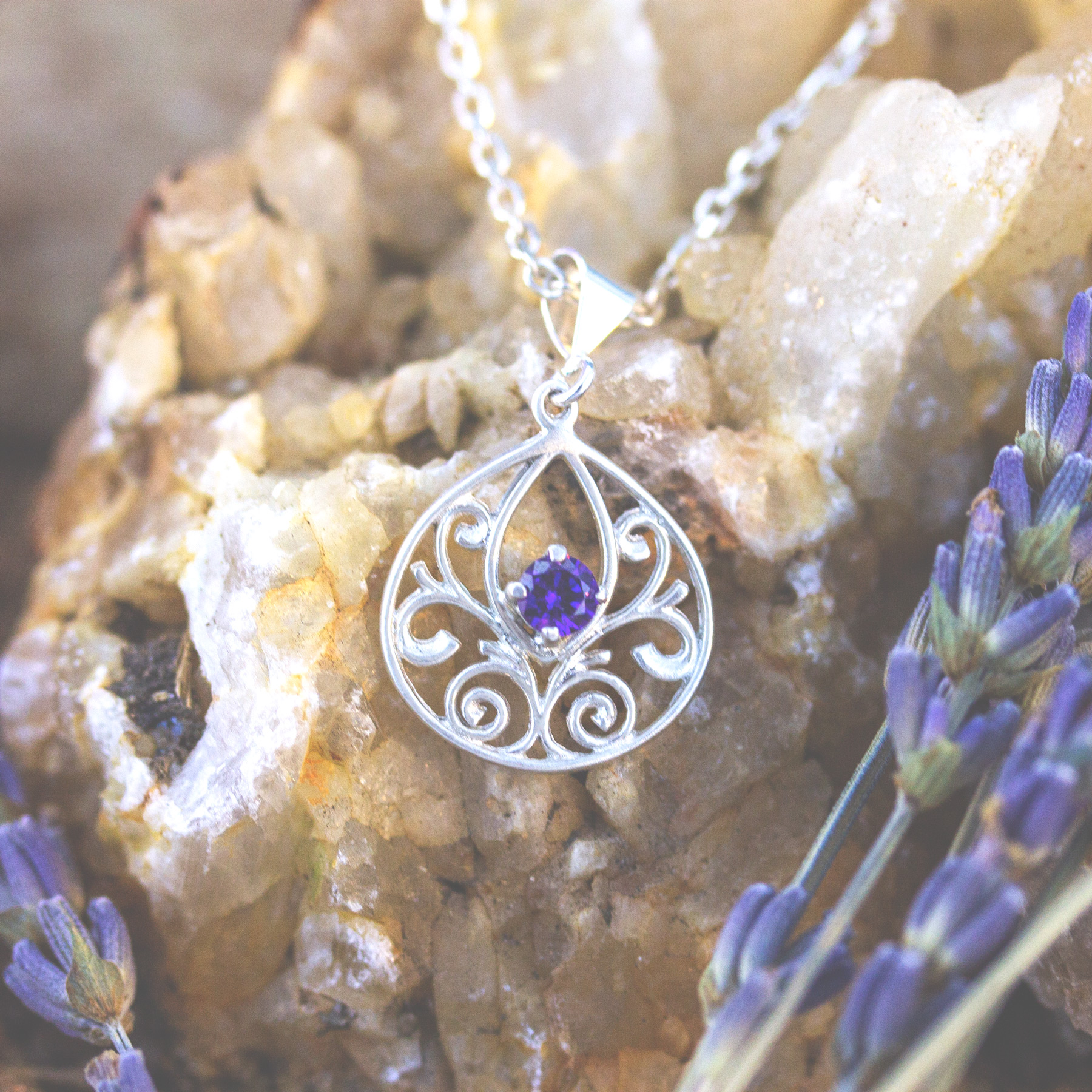Birthstones have always had special meanings, though they haven’t always been the same. Learn about the history and meaning of birthstones in this article. This blog was updated in 2020.
Birthstones are always a popular jewelry gift idea, especially for moms. But how did we decide to associate certain stones with each month and what do each of these stones mean? Some might argue that the idea of birthstones are a great marketing ploy. But there's so much more to them than that!
The Ancient Birthstones
The idea of using gemstones and minerals as birthstones traces all the way back to biblical times. In the 1st century, the Jewish historian Josephus believed there was a connection between the 12 stones of Aaron’s breastplate, from the Book of Exodus, the 12 months, and the 12 zodiac signs. Each was also associated with the 12 tribes of Israel. The list of stones is not conclusive, depending on the translation, but the generally accepted list is emerald, sapphire, diamond, topaz, carbuncle, sardius, agate, ligure, amethyst, onyx, jasper and beryl.

Photo Source
Centuries later, religious treatises began associating each stone with a disciple. It then became common practice for a person to own all 12 stones and wear the corresponding one for each month. This practice stood for centuries.
The ancient or traditional list of birthstones was usually listed as:
- January – garnet
- February – amethyst, hyacinth, pearl
- March – bloodstone, jasper
- April – diamond, sapphire
- May – emerald, agate
- June – cat’s eye, turquoise, agate
- July – turquoise, onyx
- August – sardonyx, carnelian, moonstone, topaz
- September – chrysolite
- October – opal, tourmaline
- November – topaz, pearl
- December – bloodstone, ruby
How Modern Birthstones were Decided
The idea of wearing a single birthstone is generally credited to 18th century Polish gem traders (though some argue it was also started in Germany in the 1560s) who marketed the idea of selling a gemstone based on a person’s birth month.
However, it wasn’t until 1912 when the American National Association of Jewelers met to adopt an official list of birthstones. When a month has two stones associated with it, one is considered a primary and the other is a secondary. These were:
- January – garnet
- February – amethyst
- March – bloodstone and aquamarine
- April – diamond
- May – emerald
- June – pearl and moonstone
- July – ruby
- August – sardonyx and peridot
- September – sapphire
- October – opal and tourmaline
- November – topaz
- December – turquoise and lapis lazuli
For the most part, this list hasn’t changed much. In 1952, the Jewelry Industry Council of America added Alexandrite as a secondary stone for June, switched the primary and secondary for March, replaced lapis lazuli with zircon for December, specified pink tourmaline for October, and added citrine for November. In 2002, the American Gem Trade Association added tanzanite as an option for December and in 2016 they, along with Jewelers of America, added Spinel as an option for August. The modern list of birthstones today has very little to do with their biblical origins as the stones and perceptions have changed so much.
Using Birthstones in Your Jewelry Collection Today
Today's birthstone jewelry has a whole new meaning. While a person's birthstone is still a popular addition to a personal jewelry collection, jewelry pieces with birthstones are often a favorite gift for mothers and grandmothers. It's a great way for mom to keep her kids close to her all day, even if she's not with them. To help with cost and color consistency, many jewelers use CZ stones or Swarovski crystals in the birthstone colors. Adding a birthstone personalization option is great upsell for a lot of jewelry pieces. Spring and holiday shopping season are great times to promote your birthstone jewelry, for all the Mother's Day shoppers and as unique gifts for the mom in someone's life. Download our birthstone chart for quick reference.
The Modern Birthstones and Their Meanings
Disclaimer: This list is the generally agreed upon primary list, some lists will vary. Many stones may also have a multitude of meanings and uses.
January

Garnet
January's birthstone is one of the few that has remained unchanged throughout the history of birthstones. Garnet is a silicate mineral usually found in parts of Brazil, India, Madagascar, Kenya, Tanzania, the U.S. and more. It contains magnesium, calcium, manganese or iron combined with chromium, iron or aluminum. The most popular color commonly associated with the birthstone is a deep red, but it can also be red, orange or green and rarely blue. Lower grade stones are often used as abrasives. It has a hardness of 6.5 – 7.5 on the Mohs scale.
Meanings & Uses
Some of the most popular meanings associated with a garnet stone are constancy, truth and faith. Try to wear a garnet piece of jewelry the next time you travel! Many believe it will keep the wearer safe while traveling. If you're prone to having nightmares, garnets are also assicated with preventing nightmares. Indian astrologers even believe it can eliminate negative feelings and help increase the owner's self-confidence. Garnet stones are often used for regeneration, energizing and revitalizing the entire system. It is also thought to help stabilize a person, both internally and externally. Garnets are believed to clean and re-energize the chakras, which helps speed up the healing process.
February

Amethyst
February's birthstone has also largely remained unchanged through the years, though people in ancient times also had a couple alternative options. Amethyst is a variation of a quartz crystal usually found in parts of Brazil, Bolivia, Uruguay, Zambia and the U.S. The quartz has iron impurities that give it the purple color we know. Amethysts can be found in a range from pale lilac to a deep reddish purple. They have a hardness of 7 on the Mohs scale.
Meanings & Uses
Amethysts are an extremely popular stone or crystal outside of being used as a birthstone. It has had a variety of meanings throughout the years and is believed to be one of the strongest healing crystals.The most popular beliefs are that amethyst can give the wearer courage and prevent insomnia, as well as strengthen relationships. They are a popular stone for healing uses, especially when worn by the healer. Many healers wear an amethyst to help focus their energy into the person they're working to heal. They are also believed to help with blood and breathing problems. When amethyst crystal clusters are present, they’re used to keep the air and life force of an area clean and positive. Placing them in the sunlight is believed to heal any negative energy in a home, while exposing them to the moonlight is believed to create a sense of calm throughout the home.
Leonardo da Vinci believed the stones could increase a person's intelligence, while the ancient Greeks believed it could guard against intoxication (the word Amethyst even derives from the ancient Greek word for sober – amethystos).
March

Aquamarine
Aquamarine is a color variation of the mineral Beryl usually found in parts of Indonesia, Armenia, Azerbaijan, Brazil, Bulgaria, China, Australia, the U.S., and Scotland. When beryl is doubly ionized with iron impurities, we receive the traditional pale blue color we commonly associate with the birthstone. However, a triply ionized piece will produce a yellowish gold color. If both types of impurities are present, we’ll see a dark blue called Maxixe. Aquamarine is commonly found in large pieces or in granite intrusions and has a hardness of 7.5 – 8 on the Mohs scale.
Meanings & Uses
March's birthstone is often associated with the ocean. As such, many believe aquamarine will help the wearer exude a calming and soothing influence. They are believed to be able to stay more level-headed under stress. And of course when you're feeling calm, your communication and self-expression is much better. It is commonly used to reduce stress and aid in meditation. Some also believe it will clean your aura and align your chakras. Do you know a soon to be mom? It is thought that giving aquamarine stones to a pregnant woman will guard her and the unborn child from harm and discourage miscarriages.
Going back in time a bit, sailors believed that an aquamarine talisman etched with the likeness of Neptune, the sea god, would protect them against ocean dangers. Ancient users also believed by placing an aquamarine stone in water, then drinking that water, would heal the person of heart, live and stomach problems.
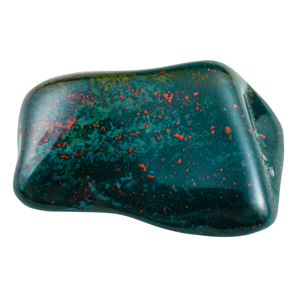
Bloodstone
As an alternative birthstone, bloodstone is a little different than the others discussed so far. Bloodstone is a type of chalcedony that is usually an opaque green with red inclusions of, usually, hematite. Though occasionally it may also have yellow inclusions. They are usually found in parts of Indonesia, Armenia, Azerbaijan, Brazil, Bulgaria, China, Australia, the U.S. and Scotland.
Meanings & Uses
Bring someone a bit of good luck by giving them a bloodstone! Today, it is believed to be a lucky charm. Historically though, some believed it would increase the wearer's strength and keep them young and healthy. Ever wanted to be invisible? People used to believe that bloodstones could help with that!
April

Diamond
Diamonds are one of the most popular stones today, whether it’s a person’s birthstone or not. It is formed by simultaneously applying high pressures with relatively low temperatures (but still in the 1,000s!). Although colorless diamonds are the most popular, they can be found in many colors such as gray, yellow, brown, pink, black and more. The deeper the color, the higher price a diamond will fetch. Diamonds are usually found in parts of South Africa, India, Brazil, Borneo, Venezuela, Russia, Australia, and the U.S. Although there is a movement to move toward laboratory created diamonds or at least ensuring a diamond is ethically mined. There is no known stone harder than a diamond, with a Mohs scale rating of 10/10.
Meanings & Uses
Centuries ago, diamonds were believed to protect against poison. More commonly today though, they symbolize everlasting love. Diamonds are often used to protect the wearer from negative energies and electromagnetic stress. They are thought to be an energy amplifier that never requires charging. Many also believe diamonds can help glaucoma, treat dizziness and vertigo, and overall benefit the brain.
May

Emerald
May's birthstone is another popular choice for many jewelry wearers. Emeralds are very similar to aquamarines with beryl as the underlying mineral. But to produce an emerald, the beryl needs to have chromium or vanadium impurities.These impurities give the stone that beautiful deep to medium green color we usually associate with an emerald. However, an emerald may also have a bluish green color as well. They are usually found in parts of Colombia, Brazil, Zambia, Zimbabwe, Madagascar, and Nigeria. Emeralds are fairly hard, coming in at 7.5 – 8 on the Mohs scale.
Meanings & Uses
Emeralds are often used to symbolize wisdom, growth, and patience. If you're a little forgetful, try wearing some emerald jewelry! They're thought to help strengthen your memory. Emerald stones are associated with a wide spectrum of healing properties as well. They’re thought to treat a variety of heart, lung, and spine disorders. They're also thought to aid in recovering from an infectious illness. Some also believe emeralds can help your sinuses and improve your vision. Some wearers will be happy to learn that emeralds have been thought to help alleviate diabetes. It has also been a belief that emeralds can help you see into the future!
June
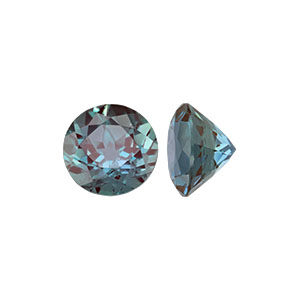
Alexandrite
For June babies, the most recent primary stone is a unique one! Alexandrite has an unusual optic property that causes the color to change from a reddish violet in incandescent lighting to an orange-yellow in the sunlight. It is formed when liquid magma melts beryllium and aluminum. Then when it cools, an 8-point crystal is formed. However, alexandrite is a very rare stone. And because of that, is also very expensive. Because of how rare and expensive it can be, most birthstone lists focus on the pearl as June's birthstone.
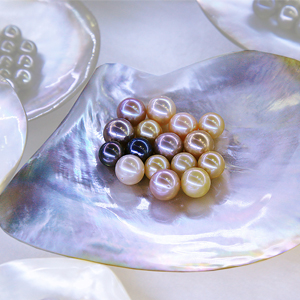
Pearl
Pearls are the most commonly used and mentioned birthstone for June. Different from most birthstones, the pearl is not a typical mineral but rather an organic material. Most pearls on the market today are cultivated in pearl farms. You may still find some organic pearls, but with much controversy surrounding their harvesting they're not as common as they once were. Pearls can come in a large range of colors and shapes, though the round white pearl is the classic look. They’re very soft though, coming in at 2.5 – 4.5 on the Mohs scale.
Meanings & Uses
Pearls have a long history of being associated with purity, honest and calmness. The ancient Greeks once believed pearls were the hardened tears of joy from Aphrodite, the goddess of love. A few cultures also associate them with the moon. Pearls are believed to help treat digestive disorders and soft organs. They're also thought to improve the skin and help relieve bloating. Some also believe they increase fertility and ease childbirth.

Moonstone
As a third option, June birthdays can also consider moonstone as a birthstone. Moonstone is a sodium potassium aluminum silicate variation of the feldspar minerals usually found in parts of the U.S., India, Sri Lanka, Brazil, India, Madagascar, Myanmar and Tanzania. This stone is very well known for the distinct way light diffracts across the gemstone.
Meanings & Uses
Unsurprisingly, moonstones have been associated with the moon for centuries and across cultures. They were once believed to be solid moon rays and both the Romans and Greeks associated the stone with their lunar deities. Similar to pearls, moonstones are associated with fertility as well as often symbolizing love and passion.
July
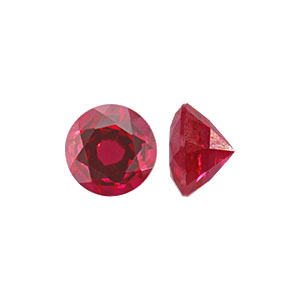
Ruby
The July birthstone has been a popular stone for jewelry and royal jewels for centuries. Ruby stones are made of aluminum and oxygen, but with some of the aluminum molecules replaced with chromium. Structurally, rubies and sapphires are nearly identical. However, only a primarily red chromium stone is considered a ruby. Rubies can come in a variety of reds, including tints with pink, purple, orange or brown, as well as a very deep red. They are usually found in parts of Myanmar, Sri Lanka, Thailand, Cambodia, Madagascar, Kenya, Tanzania, Mozambique, Afghanistan, Nepal, and Vietnam.
Meanings & Uses
It should come as no surprise that the reddest stone typically symbolizes love, passion, energy and success. Rubies are also believed to protect the wearer from evil and help them live in harmony with everyone. Indian jewelers often included rubies as a symbol of power and energy, while Burmese warriors used to wear them into battle with the belief it could made them invincible. Some of the healing properties include helping with the removal of negative energies and detoxifying the body. Rubies are also believed to encourage potency and vigor, and thus fighting exhaustion and lethargy.
August

Peridot
August's primary birthstone is peridot. These stones are an olivine rock that is considered gem quality. They are usually found in parts of Egypt, Myanmar, the US, Norway, Mexico, Sri Lanka, Kenya and Australia. No matter which mineral is included in the makeup these stones will always be green, though it can range in shades depending on where the stone was sourced from. Most of these rocks are small and/or heavily weathered so a gem quality stone is rare. Peridot stones can be a little soft, falling at 6.5 – 7 on the Mohs scale.
Meanings & Uses
Peridot is often associated with harmony, good health, restful sleep and peacefulness. When a peridot stone is set in gold, it is thought to calm the wearer's anger and protect them from nightmares. These green stones are often associated with aiding in the healing of disorders of the heart, thymus, lungs and more. It is also thought to banish lethargy, apathy and exhaustion, as well as strengthening the immune system and benefiting the skin.

Spinel
August’s secondary birthstone is a magnesium/aluminum member of the spinel minerals. These stones are primarily found in mafic igneous rocks in parts of Sri Lanka, Afghanistan, Tajikistan, Myanmar, Vietnam, Tanzania, Kenya, Madagascar and Canada. We often associate the green color with the birthstone, but it is also found in many others, such as red, pink, blue, violet, brown, black and colorless. Spinel is a little harder than Peridot, coming in at 7.5 – 8.0 on the Mohs scale.
Meanings & Uses
The red versions of spinel is believed to help treat blood loss and inflammatory diseases.
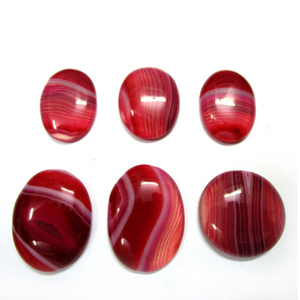
Sardonyx
As a third option, sardonyx was the ancient birthstone originally associated with August which is believed to be one of the original stones on Aaron's biblical breastplate. This stone is a variant of onyx that has red shades of bands instead of the typical black. Sardonyx was a popular carving material for thousands of years, so many older cameos were created using this stone.
Meanings & Uses
Dating to biblical times, sardonyx has been thought to symbolize the strength of a spiritual life. In fact, ancient Roman soldiers used to wear rings carved with an image of Mars, the god of war, as an extra layer of protection when they went into battle.
September

Sapphire
September's birthstone is directly related to July's birthstone. In fact, the only stone in the corundum family that is not considered a sapphire are the red colors that are reserved for rubies. Blue is most often associated with this birthstone, but it can also be colorless, green, purple, yellow, brown, pink, black and more. Sapphires are usually found in parts of Sri Lanka, Kashmir, Australia, Myanmar, Thailand and the US. They are a sturdy stone with a rating of 9 on the Mohs scale.
Meanings & Uses
Some cultures believe the sapphire symbolizes purity and wisdom. Others associate it more with sincerity, truth, faithfulness and nobility. In healing, sapphires are thought to treat blood disorders and combat excessive bleeding. They’re also thought to help ease pain and reduce stress. Some healers often use them to help regulate a person's glands and calm their overactive body systems.
October

Opal
October's primary birthstone is another unique one in the list of birthstones. Opals can form in any type of rock, as it is not actually a mineral but rather a hydrated amorphous form of silica with varying amounts of water. They often have multicolored patterns due to the way an opal’s structure reflects and diffracts light. In fact, they are sometimes compared to fireworks and galaxies. Opals can come in a wide variety of colors including white, orange, red, blue, black and violet. They are usually found in parts of Australia, Brazil, the Czech Republic, Ethiopia, Honduras, Indonesia, Mexico, Poland, Tanzania and the U.S. Opals are a very soft stone, coming in at 5.5 – 6.5 on the Mohs scale.
Meanings & Uses
In Europe, opals have long been thought to symbolize purity, hope and truth. For others, they have come to stand for faithfulness and confidence. Opals are thought to help a wearer control their temper and calm their nerves. They’re also believed to repel evil and protect the eyesight of the wearer. Some healers believe an opal can help strengthen your memory and increase the will to live. It is also said to treat infections, fevers, cleanse the blood and regulate insulin.

Tourmaline
October's alternative birthstone was often mistaken for other types of minerals due to the wide variety of colors that can be found. It was only relatively recently that scientists described tourmaline as their own species. Tourmaline can even have multiple colors in one crystal. Pink is the color most traditionally associated with the birthstone, but red, green and neon green are also popular colors. These stones are a little sturdier than opals, falling between 7 - 7.5 on the Mohs scale.
Meanings & Uses
Due to the number of colors tourmaline can be found in, ancient mystics once thought they could inspire artists. Each color is believed to have individual healing abilities. For example, pink tourmaline is seen as a symbol for love, compassion and gentleness.
November
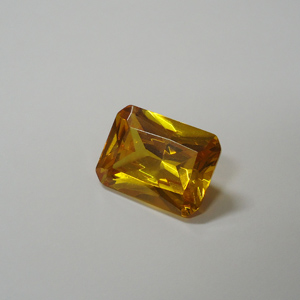
Golden Topaz
November's birthstone is the perfect fall -colored accessory. Topaz has been the primary birthstone for November for many of the list iterations. However, most modern lists specify golden topaz. They can come in a wide range of colors, such as red, yellow, blue, green and on the rare occasion pink, depending on the impurities found in the source mineral. Mostly, we associate a color that ranges from deep yellow to red- or deep- orange brown with the birthstone. Topazes are usually found in parts of Bolivia, the Democratic Republic of the Congo, Madagascar, Mexico, Myanmar, Namibia, Peru and more. These stones fall as a 7 on the Mohs scale.
Meanings & Uses
For many people, topaz symbolizes love and affection or honor and strength. It is thought to calm anger and balance strong emotions while giving increased strength and intellect. The ancient Greeks even believed it could turn a wearer invisible. The healing properties of topaz are believed to help combat eating disorders and aid in digestion.
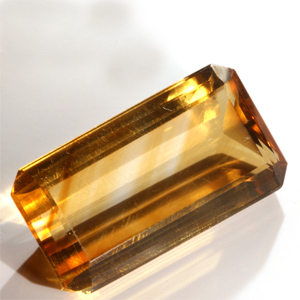
Citrine
November's secondary birthstone is visually very similar to topaz. Citrine is a variety of quartz which contains ferric impurities to bring out a pale yellow to brown color. This stone is not easy to find naturally, so many are other stones, especially amethysts, that have been heat treated. They’re usually found in parts of Brazil when found naturally.
Meanings & Uses
Citrine was often mistaken for topaz, so early cultures associated it with similar traits as topaz. It is thought to soothe tempers and keep the wearer calm. Some also believe citrine will bring prosperity to the wearer.
December
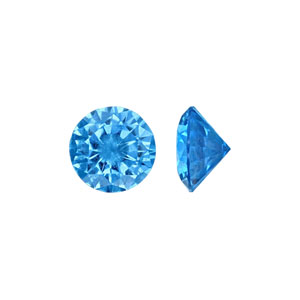
Blue Zircon
Though it's not always considered the primary birthstone for December, zircon is a recent addition to the primary birthstone list. It is a very common stone to fine, though the larger crystals can be rare. Impurities of hafnium, uranium or thorium give the stone a variety of colors. Blue is the most commonly associated birthstone color, though it is relatively rare. Zircons come in a range from reddish brown, yellow, gray, green and red. Heat treatments can bring out a wide variety of other colors. They are usually found in parts of Sri Lanka, Cambodia, Myanmar, Thailand, Australia and Canada. They are a fairly soft stone, coming in at 6 – 7.5 on the Mohs scale.
Meanings & Uses
Zircon stones were once believed to help induce sleep, promote wealth and protect an owner from injury and evil.
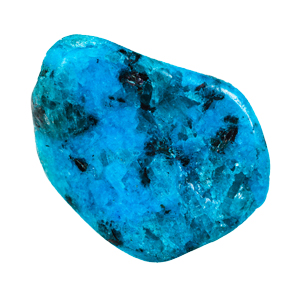
Turquoise
Turquoise is the traditional primary birthstone for December. Some modern lists still give it preference, while others have switched to zircon. It is a phosphate of copper and aluminum that is formed when pre-existing minerals are weathered and oxidized over time. Turquoise is found in shades of blue to green and usually mined in Iran, Sinai, the U.S., Bulgaria, China, Afghanistan, Australia, India, Chile, England, Germany and Poland and surrounding regions. This is a fairly soft stone, coming in at 5 – 6 on the Mohs scale.
Meanings & Uses
Turquoise is often regarded as a love charm and a symbol of good fortune. Some believe it will relax the wearer’s mind and protect them from harm. Rings with turquoise are thought to keep away evil spirits. Healers like using turquoise for a variety of reasons. Some believe it aids in the absorption of nutrients and enhances the immune system. Among other things, it is believed to have anti-inflammatory and detoxifying effects as well.
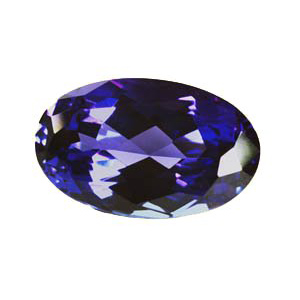
Tanzanite
Tanzanite is a newer stone, only discovered in the 20th century and added as an alternative birthstone for December in 2002. However, it is only found in one small mining area in Tanzania so many believe it will likely be depleted in the next few decades. This stone is a variety of the zoisite mineral with small amounts of vanadium in it. Tanzanite is considered trichroic, so it shows brown, blue and violet at the same time. Heat treatments can take the brown out and leave the stone to reflect only blue and violet.
The Many Lists of Birthstones
It seems as if there is a new way to determine a birthstone around every corner. While most people choose to base it on the modern list, there are many others you can choose from. For example, the list of tropical zodiac signs have their own list of birthstones; you might end up with the same stone on this list as the primary list. The day of week you were born may also give you a different birthstone. Britain created its own list in 1937 and although it's very similar to our list, there are a few differences. Some cultures base your birthstone on numerology. A few of the Eastern cultures look to the stars to determine the most beneficial stone for a person by basing it on the astrological sign present in the sky when a person was born.
Tropical Zodiac:
Aquarius – garnet
Pisces – amethyst
Aries – bloodstone
Taurus – sapphire
Gemini – agate
Cancer – emerald
Leo – onyx
Virgo – carnelian
Libra – chrysolite
Scorpio – beryl
Sagittarius – topaz
Capricorn - ruby
Britain:
January – garnet
February – amethyst
March – aquamarine, bloodstone
April – diamond, rock crystal
May – emerald, chrysoprase
June – pearl, moonstone
July – ruby, carnelian
August – peridot, sardonyx
September – sapphire, lapis lazuli
October – opal
November – topaz, citrine
December – tanzanite, turquoise
The nice thing about having all of the variety to choose from is that it gives a wearer quite a few options to choose a stone that speaks to them.
References:
Forbes: What Your Birthstone Means
You may also find these articles interesting:
5 Reasons to Choose Laboratory-Grown Diamonds and Colored Stones
How to Prong Set Stones: A Step by Step Guide
5 Tips to Start Setting Stones
Shop Halstead's selection of loose birthstone CZ stones and birthstone charms to add birthstones to your jewelry today.





